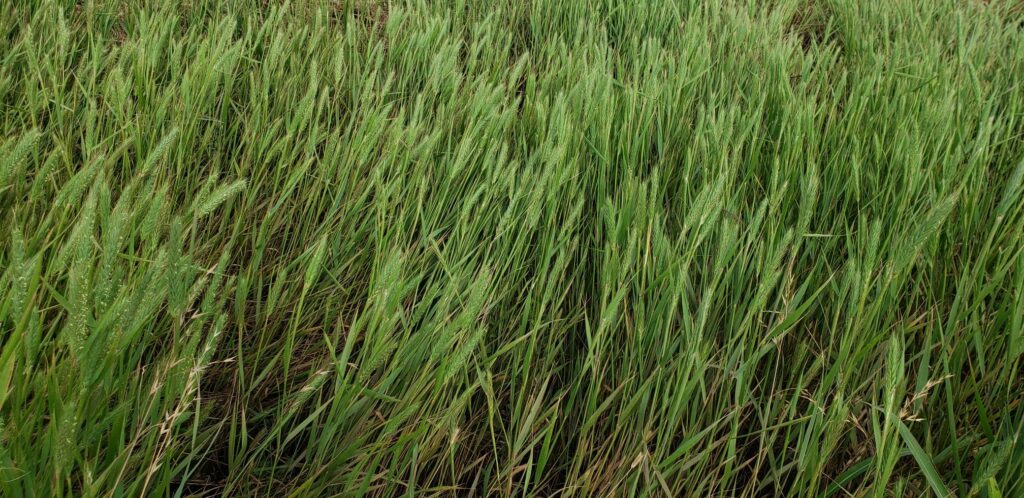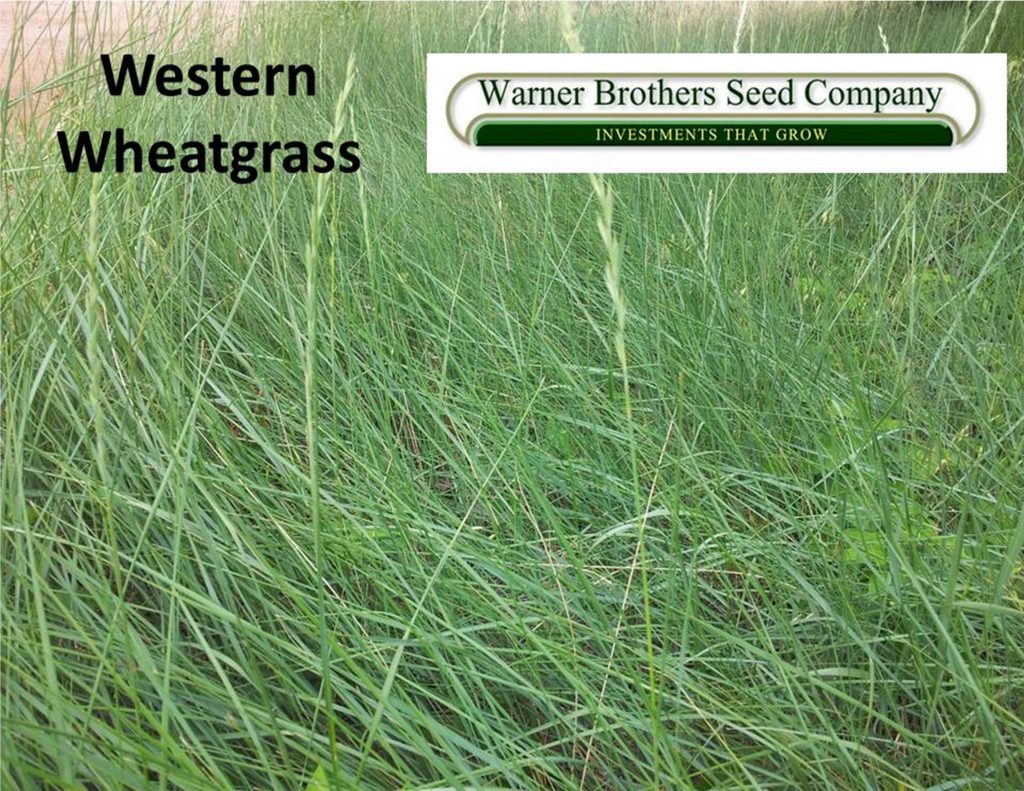Western Wheatgrass (Agropyron smittii)

Western Wheatgrass is a native, cool-season, sod-forming, perennial grass. It has good drought and salt tolerance. Western Wheatgrass provides good forage for livestock early in the growing season. It is well-suited for erosion control and wildlife plantings.
It is widely adapted throughout the United States except for the humid areas of the South and Southeast. It is most abundant in the Northern and Central parts of the Great Plains were it frequently occurs as the dominant species in the native tall and short grass prairies. Although western wheatgrass grows in a variety of soils, it performs best in heavier, moist soils and soils with high salinity.
Growth begins in late fall and continues through the spring. Plants usually grow 2 to 3 feet tall. The blades are less than 1/4 inch wide and approximately 8 to 12 inches long. The leaf blades do not droop but are more or less stiff and erect, and the leaf and stems are blue-green in color. The seed heads are 2-6 inches long. Usually there is only one spike or seed at each node on the rachis.
The forage of western wheatgrass is relished by all classes of livestock and provides excellent quality hay if cut when green and actively growing. This grass is extremely valuable for use in land restoration and erosion control. With Western Wheatgrass’s hardiness, drought resistance, and capacity to spread rapidly by means of underground rhizomes are outstanding characteristics for conservation uses.
General Characteristics
| Growth Type: | Bunch |
| Life Span: | Perennial |
| Growing Season: | Warm Season |
| Native/Introduced: | Native |
| Plant Height: | 2-3 feet |
| Cold Tolerance: | Good |
| Drought Tolerance: | Good |
| Salt Tolerance: | Fair - Good |
| Soil Type: | Widely Adapted |
| Minimum Rainfall: | 10 inches |
| Planting Rate: | 1-2 pls# |
| Planting Date: | Feb. - March |
| Seed Type: | Smooth |
| Uses: | Grazing, Wildlife Habitat, Erosion Control, Reclamation |

